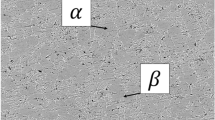Abstract
Titanium alloys are one of the most important design materials for the aircraft industry. The high strength-to-density-ratio and the compatibility with carbon fibre reinforced plastic are the reasons for a raising application in this field. The outstanding properties lead to challenging machining processes. High strength and low heat conductivity affect high mechanical and thermal loads for the cutting edge. Thus, the machining process is characterized by a rapid development of tool wear even at low cutting parameter. To reach a sufficient productivity it is necessary to dissipate the resulting heat from the cutting edge by a coolant. Therefore the cryogenic machining of two different titanium alloys is investigated in this work. The results point out the different behavior of the machining processes under cryogenic conditions because of the reduced thermal load for the cutting tool. According to this investigation, the cryogenic cooling with CO2 enables an increase of the tool life in comparison to emulsion based cooling principles when machining the α+β-titanium alloy Ti-6Al-4V. The machining process of the high strength titanium alloy Ti-6Al-2Sn-4Zr-6Mo requires an additional lubrication realized by a minimum quantity lubrication (MQL) with oil. This combined cooling leads to a smoother chip underside and to slender shear bands between the different chip segments.








Similar content being viewed by others
References
Peters M, Leyens C, Kumpfert J (1996) Titan und Titanlegierungen. DGM Informations gesellschaft, Frankfurt
Ezugwu EO, Bonney J, Yamane Y (2003) An overview of the machinability of aeroengine alloys. J Mater Process Technol 134(2):233–253
Machai C, Abrahams H, Biermann D (2012) Machinability of ß-titanium alloy Ti-10V-2Fe-3Al with different microstructures. TMS Annu Meet 1:919–926
Khanna N (2013) Machining metastable ß (Ti10.2.3 and Ti5553) titanium alloys: challenges and solutions. Elevons 3(3):11–14
Bermingham MJ, Palanisamy S, Kent D et al (2012) A comparison of cryogenic and high pressure emulsion cooling technologies on tool life and chip morphology in Ti-6Al-4V cutting. J Mater Process Technol 212(4):752–765
Hong SY, Ding Y (2001) Cooling approaches and cutting temperatures in cryogenic machining of Ti-6Al-4V. Int J Mach Tools Manuf 41(10):1417–1437
Venugopal KA, Paul S, Chattopadhyay AB (2007) Growth of tool wear in turning of Ti-6Al-4V alloy under cryogenic cooling. Wear 262(9–10):1071–1078
Klocke F, Lung D, Kramer A et al (2013) Potential of modern lubricoolant strategies on cutting performance. Key Eng Mater 554–557:2062–2071
Hong SY, Ding Y (2001) Cooling approaches and cutting temperatures in cryogenic machining of Ti-6Al-4V. Int J Mach Tools Manuf 41(10):1417–1437
Luetjering G, Williams JC (2007) Titanium, 2nd edn. Springer, Berlin
Author information
Authors and Affiliations
Corresponding author
Rights and permissions
About this article
Cite this article
Biermann, D., Abrahams, H. & Metzger, M. Experimental investigation of tool wear and chip formation in cryogenic machining of titanium alloys. Adv. Manuf. 3, 292–299 (2015). https://doi.org/10.1007/s40436-015-0122-5
Received:
Accepted:
Published:
Issue Date:
DOI: https://doi.org/10.1007/s40436-015-0122-5




